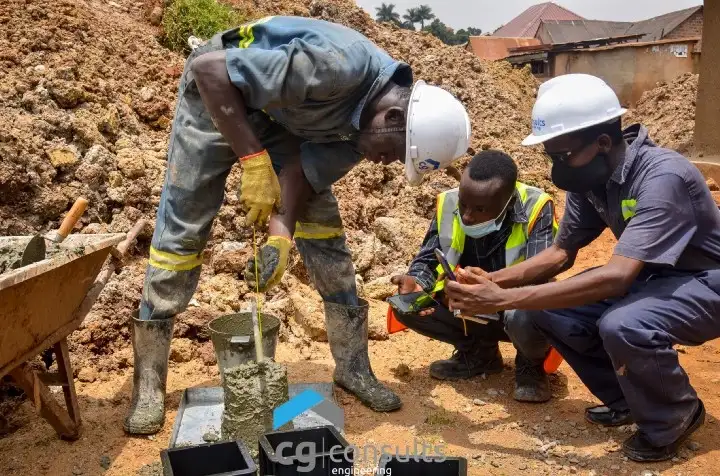Introduction
Construction projects have peculiar characteristics unlike other commercial transactions and these characteristics result in construction projects being particularly sensitive to a large spectrum of risks. The prevailing influencing factor is the parties themselves. International construction projects for example, involve parties from differing cultural and legal backgrounds who bring with them their own ideas of not only how the works themselves should be performed, but also the way in which the parties are to structure and manage their contracting and project management. This is particularly influential when parties from differing jurisdictions enter into joint venture arrangements for the performance of works. The Uganda National Roads Authority (UNRA) project status report of March 2021, for example, showed that 14 out of 31 (45%) of the Upgrading Road Projects were being executed with joint ventures between consultancy companies from differing jurisdictions. More joint venture arrangements are expected with the advent of oil drilling and processing and the push for more involvement of local companies in these undertakings. Key considerations have to be taken, therefore, to consider who will undertake the essential functions required to take the project from concept to completion, and how the project risk including the risk inherent in valuing and paying for the work, will be handled.

Risk management in Construction projects
Successful project execution dictates that this risk must be managed and that parties settle the issues associated with project risk through contract provisions. These provisions allocate the project risks between the parties and offer specific remedies in the event of breach of contract or the occurrence of specified events. It is in this light, that the modern construction contract has become a sophisticated instrument and one that begs a question about what an ideal construction contract is. Also, important to note is that a project delivery method and a contract type that mirrors the risk profile of the project are congruent with risk allocation strategy.
Project Delivery methods
One distinguishing factor between various project delivery methods is who will carry the design responsibility. This concerns the level of the contractor’s involvement during the design phase. The traditional project delivery method is the “design-bid-build” where design and construction are contracted separately. Here, the owner carries out the design and only enters into a construction contract subsequent to the completion of design. The contactor is then selected by a means of competitive tender that includes a fully detailed design. The successful bidder has the obligation to construct the work designed by the owner in accordance with the owner’s detailed specifications and drawings. The March 2021 UNRA Project progress report of the upgrading roads projects showed that over 10 projects are being delivered with this method for instance Civil Works for the Upgrading of Rwenkunye-Apac-Lira-Puranga Road. Alternatively, the owner may allocate the design function to the contractor. This is commonly referred to as the “design-build” where design and construction are combined in a single contract with a single contractor. The design is accomplished in accordance with the Employer’s requirements after the award of the contract, with the contractor given broad leeway to design the job in an efficient manner. Ideally, the contractor is told what is needed, not how to achieve the desired product. This contract places additional risk on the contractor but may also leave the Employer facing a higher contract price as a result. The March 2021 UNRA Project progress report of the Upgrading roads project showed that over 3 projects were being delivered with this method for example Package 3 and Package 5 of the Critical Oil Roads.
Once the owner has determined the delivery method, the next focus is on the type of contract. The choice of type of contract is linked to the overall payment and pricing structure that will govern the transaction.
Types of Contracts
The three basic types of contracts that are most commonly encountered in construction are: fixed price/lumpsum, re-measurement (admeasurement) and cost-plus. Fixed-price contracts are contracts where the contractor is paid a pre-agreed sum of money when they have successfully performed all of his or her obligations under the contract. Payment is made in pre-determined stages and the contractor assumes the risk for both performance and price. Re-measurement contracts involve the contractor having a fixed price for each item of work in accordance with the owner’s estimated quantities. During contract execution, the work completed by the contractor is measured and the amount the contractor is paid is determined as a product of the measured quantities and the contractor’s price for each item. In this, the Employer assumes the risk for the quantity and the contractor assumes the risk for the pricing. Under a cost-plus contract, the owner retains the cost risk, and the contractor is paid his or her costs including overheads and profit. This is more flexible in that it does not require full information at the time of tender, but this flexibility comes at a huge price for the owner. Additionally, administration of these contracts comes at a greater cost because complete records of all time and materials spent by the contractor on the work must be maintained and must be verifiable.
Contract documents
Construction contracts must include principal documents that identify and allocate the project risk and describe the works. The principal documents in a construction contract include:
· The conditions of contract, general and specific
· Technical documentation
· Schedules
· Programmes
· Bills of quantities
The contract sets forth the basic terms under which the parties are doing business together for example price and payment terms, commencement date, completion date, description of scope of work, allocation of risks of loss, alternative dispute resolution and indemnification provisions. The general conditions are a set of rules that cover problems such as claims, disputes, sub-contracting, changes, time, warranties, insurance, remedies, and termination that routinely arise in construction contracts.
Specifications provide even more detail as to the materials to be used, the performance requirements for aspects of the project and the method or techniques of construction to be employed. The specifications fill in the necessary information that is not evident from the drawings and includes materials and workmanship clauses, schedules to provide additional information and provisional sums if required, for instance the General Specifications for Roads and Bridge Works by the Ministry of Works and Transport used in the execution of Road and Bridge projects in Uganda.
The Employer’s requirements, as explained by Nael Bunni, are the main source of information for the general obligations of the contractor and should be drafted in a balanced manner so as to effectively specify the Employer’s needs, while not limiting the contractor’s flexibility in design to meet those needs. This term is used by FIDIC to denote the document that defines the purpose, scope and design and technical criteria of the works in design-build contracts. In Uganda, these are normally issued by a Procurement and Disposal Entity for example UNRA at the tendering stage.
The bill of quantities, as used in an admeasured contract, is a list of the materials and their estimated quantities against which the contractors provide their rates during the tender phase. The agreed prices are then used for the periodic valuation of the works that have been executed.
Conclusion
In conclusion, the ideal contract -the one that will be most cost effective- is one that assigns each risk to a party that is best equipped to manage and minimize the risk, recognizing the unique circumstances of the project. Therefore, it is important to undertake a comprehensive and systematic approach to identifying, assessing, and developing a risk mitigation strategy which can aid in drafting of proper construction contracts by construction parties and their representatives. It is also important to choose a project delivery system and a contract type that match the risk allocation and mitigation strategy. Drafting construction contracts, therefore, requires party representatives to be well conversant with the construction industry and the risks associated with it in order to avoid the danger that can arise from “copy and paste” of “construction contract templates”.

Leave a Reply